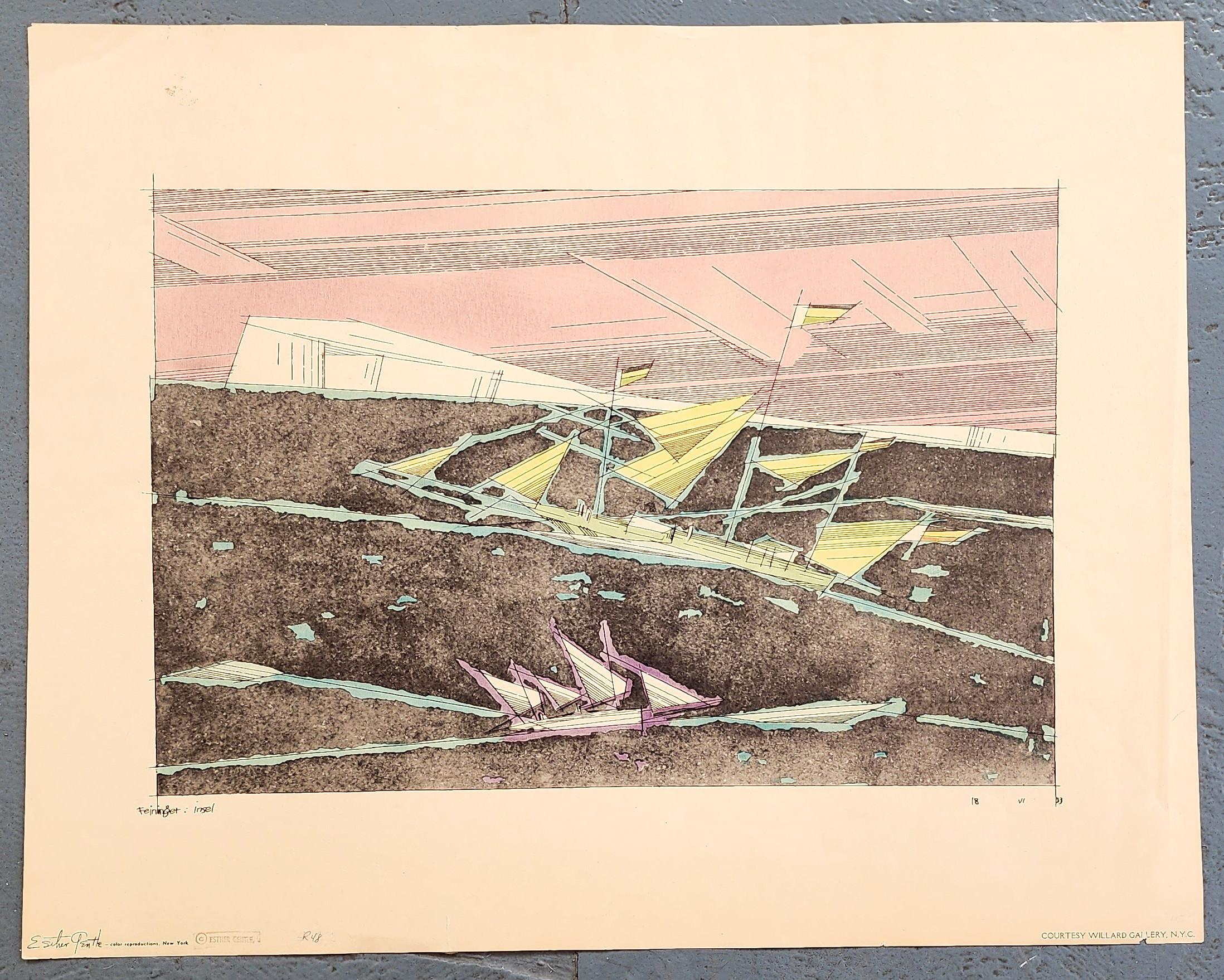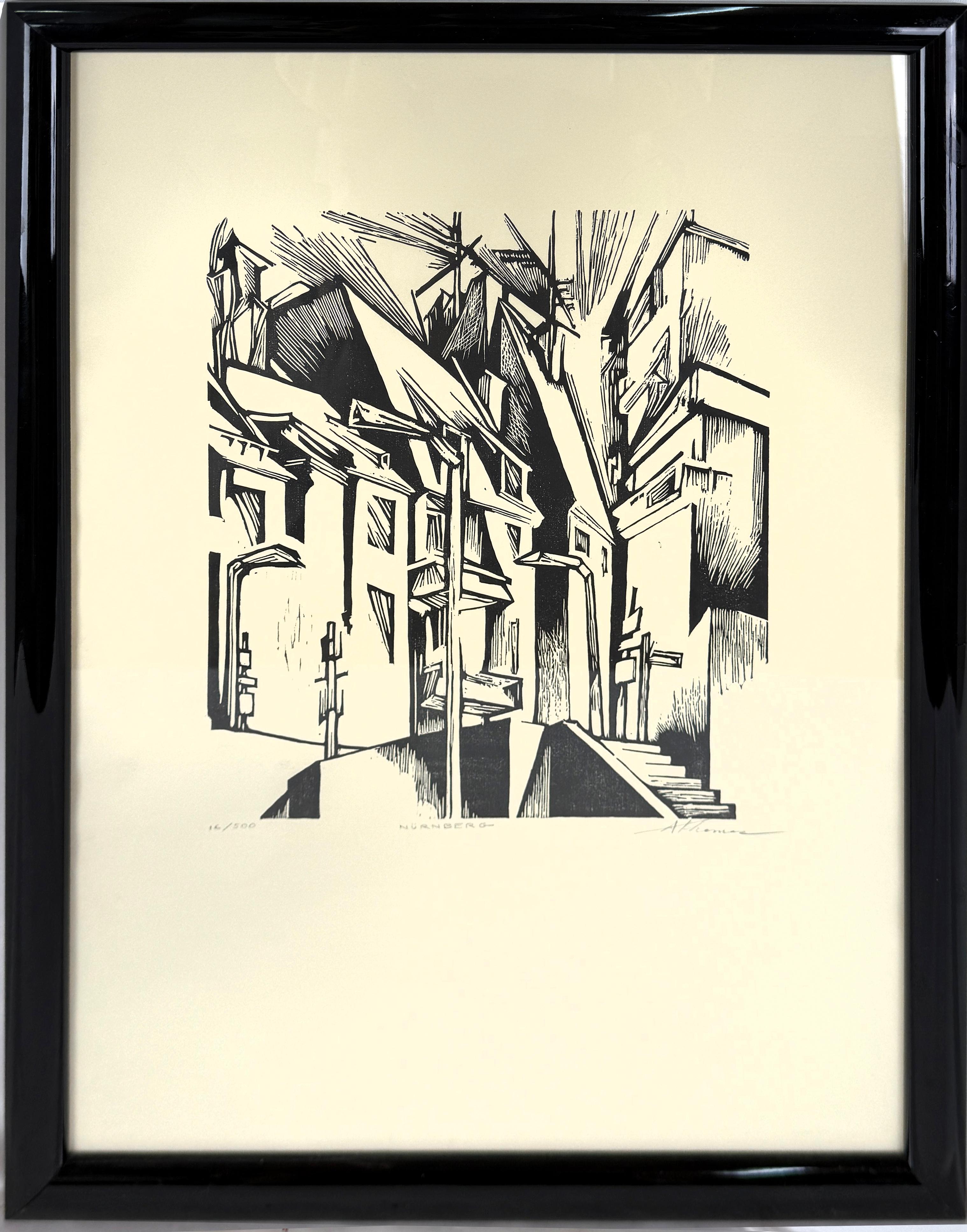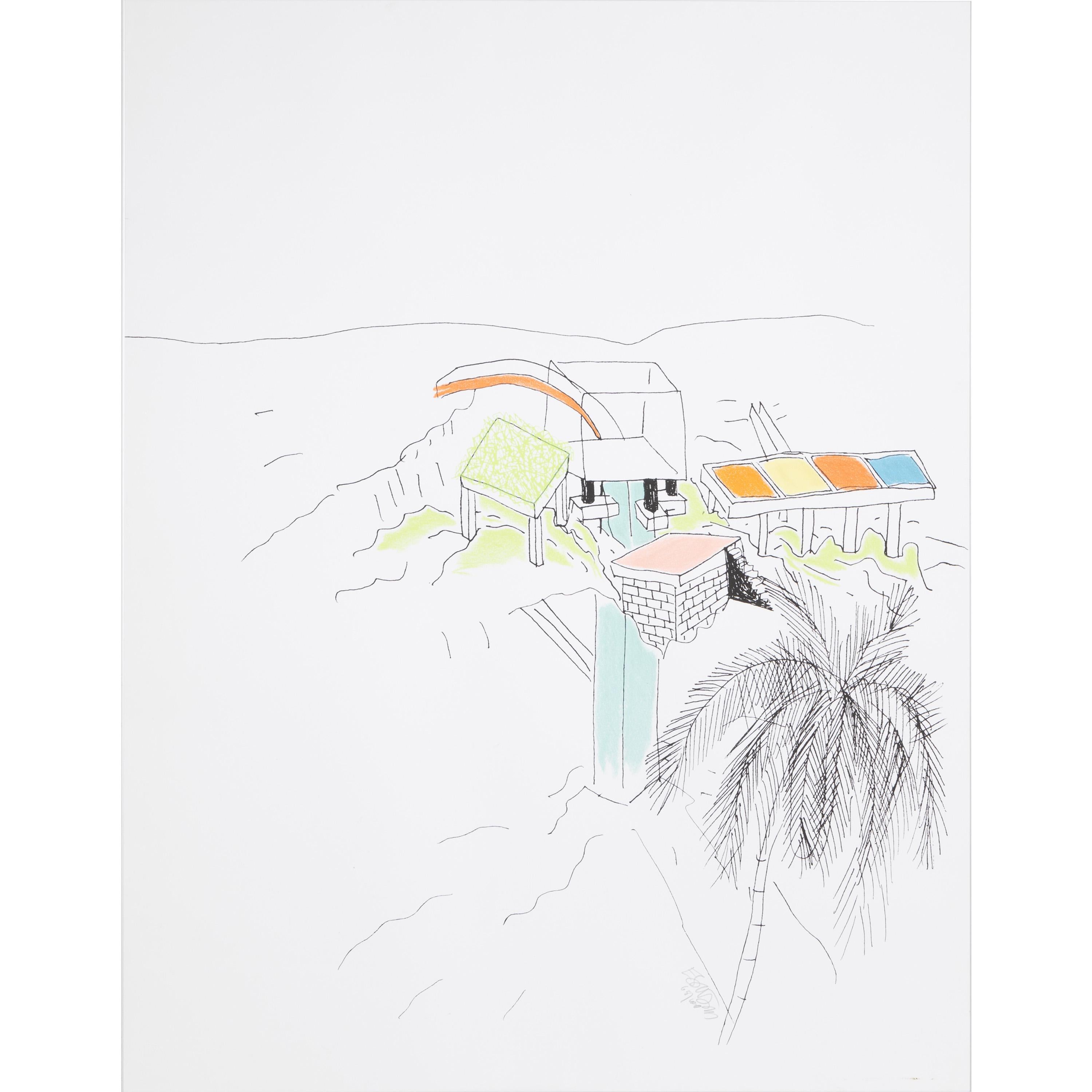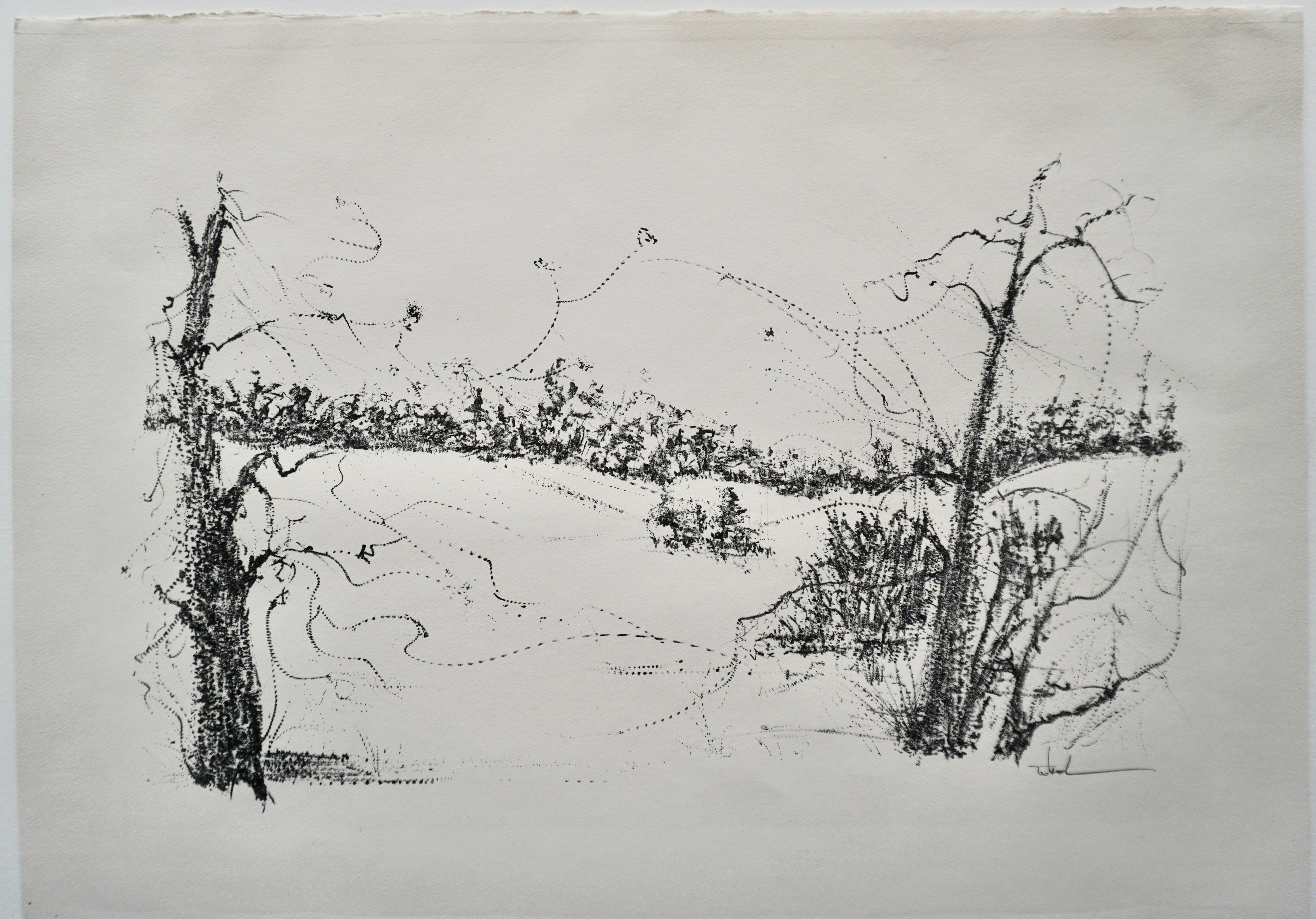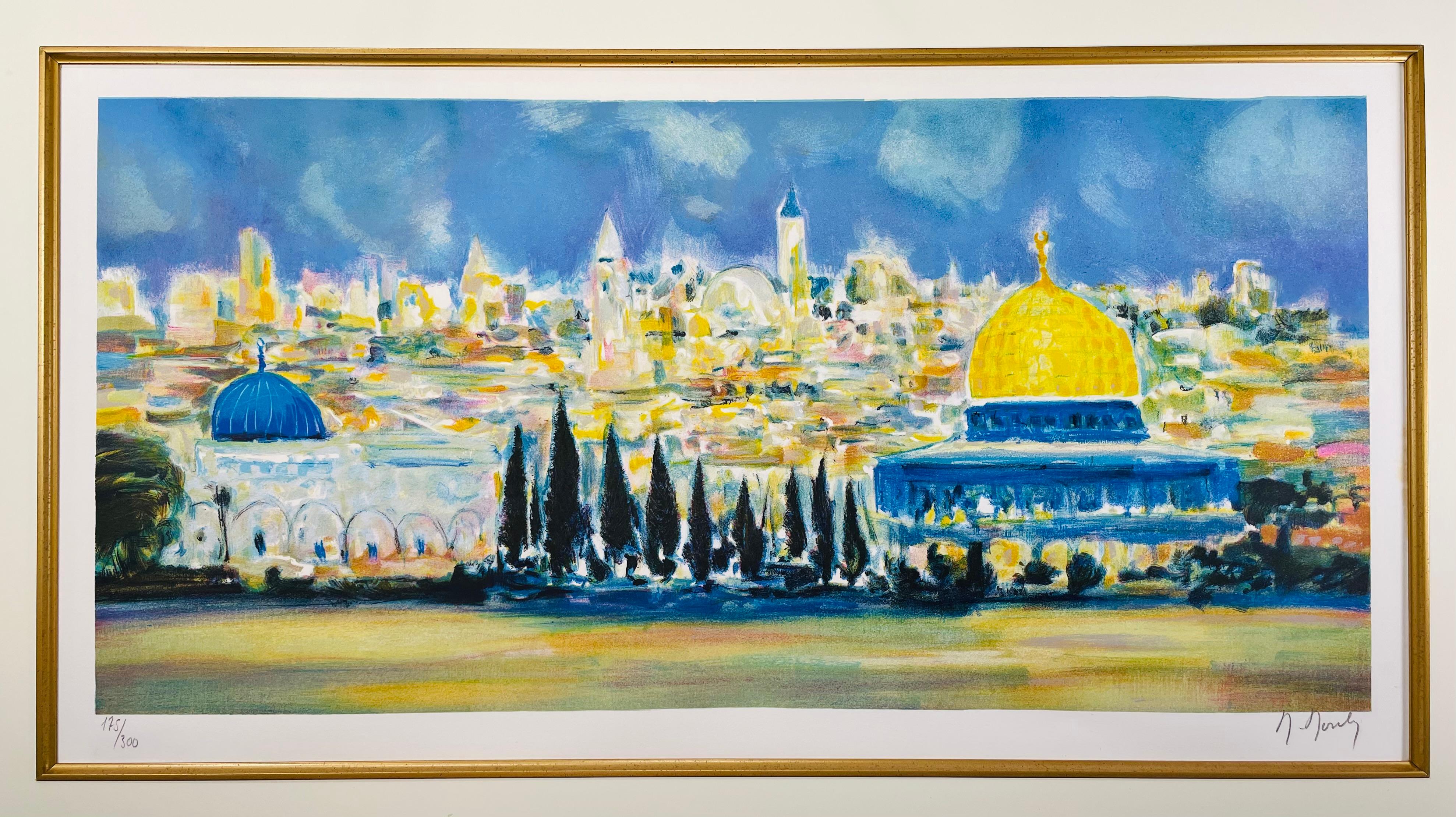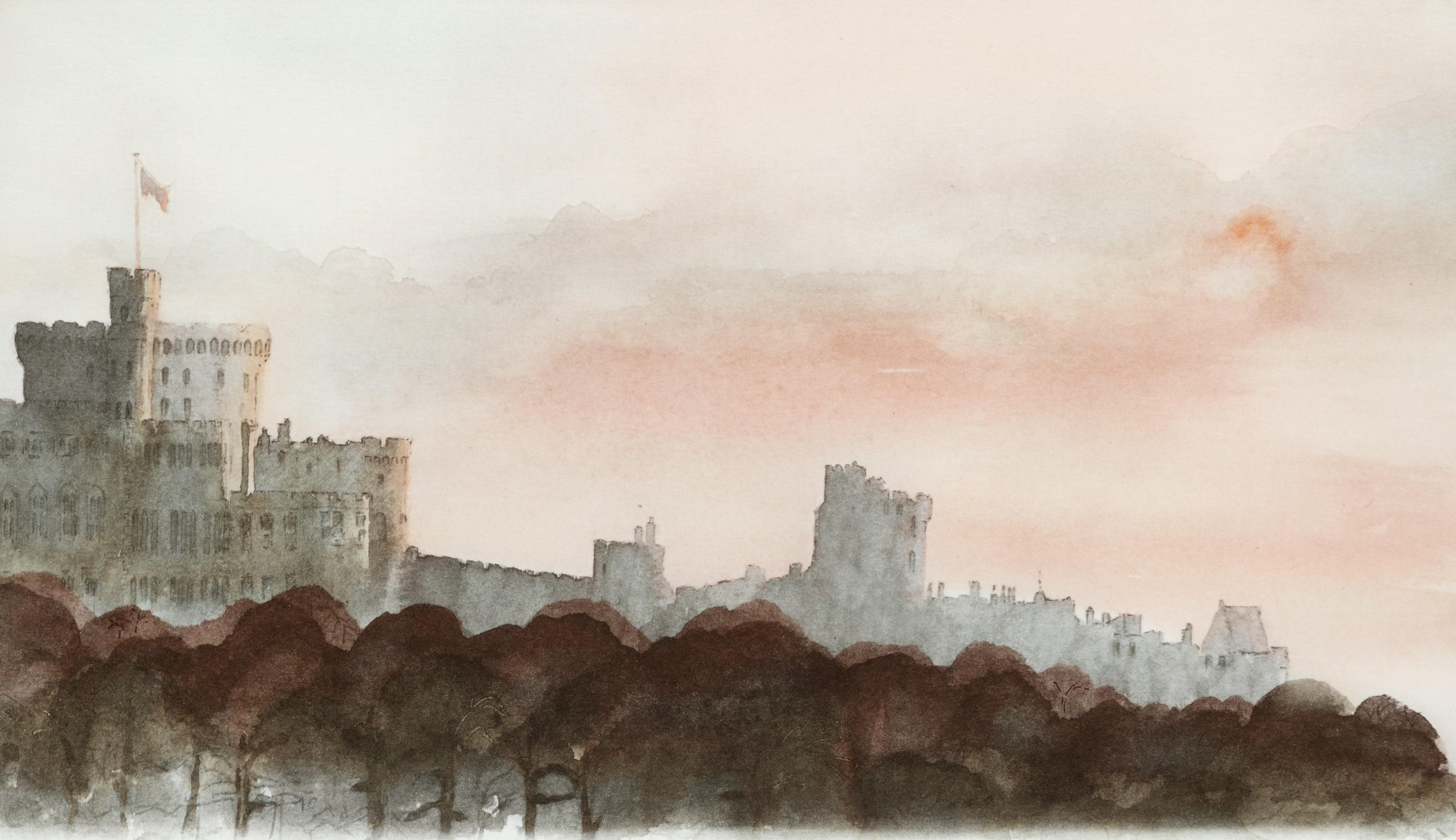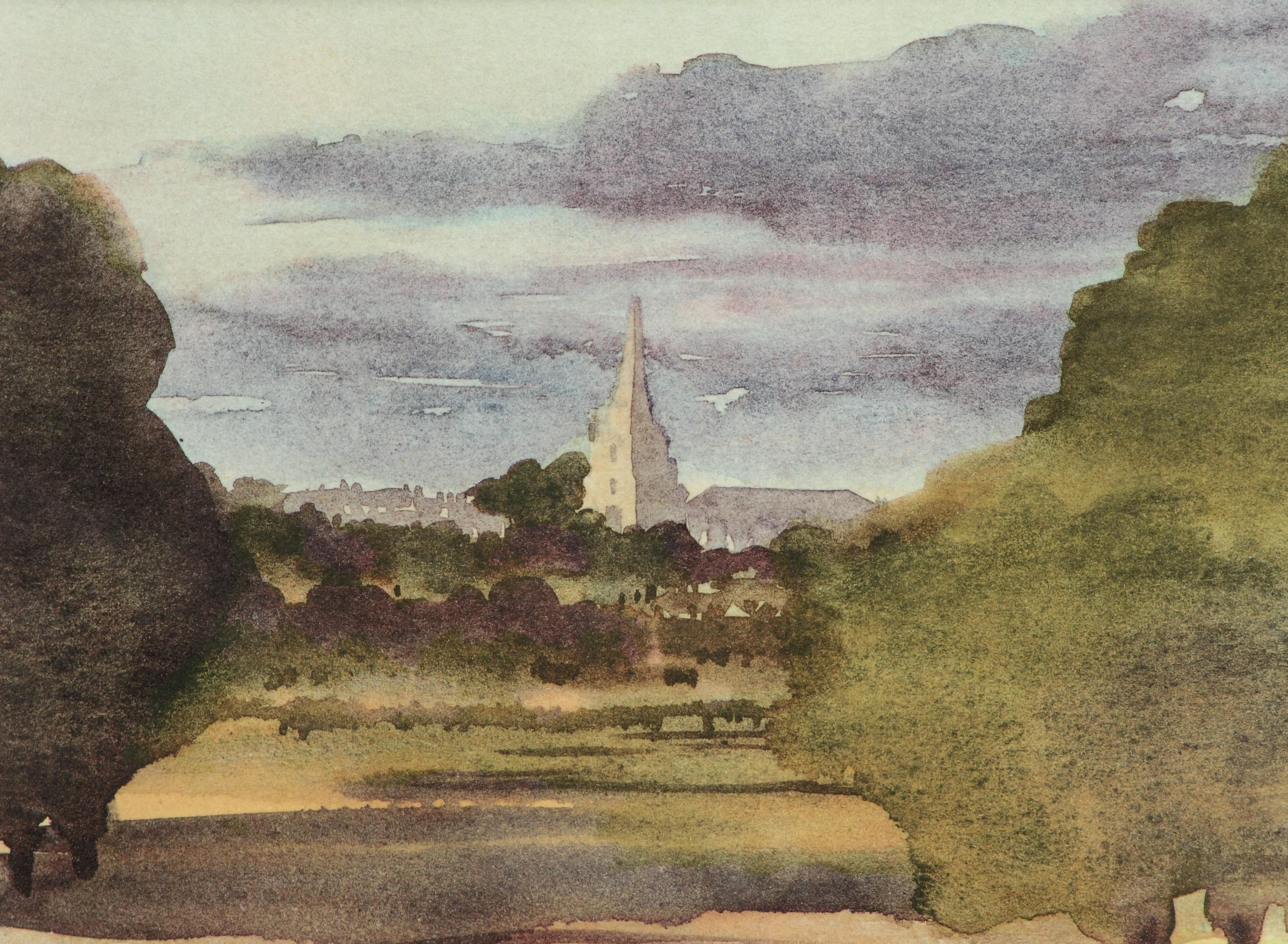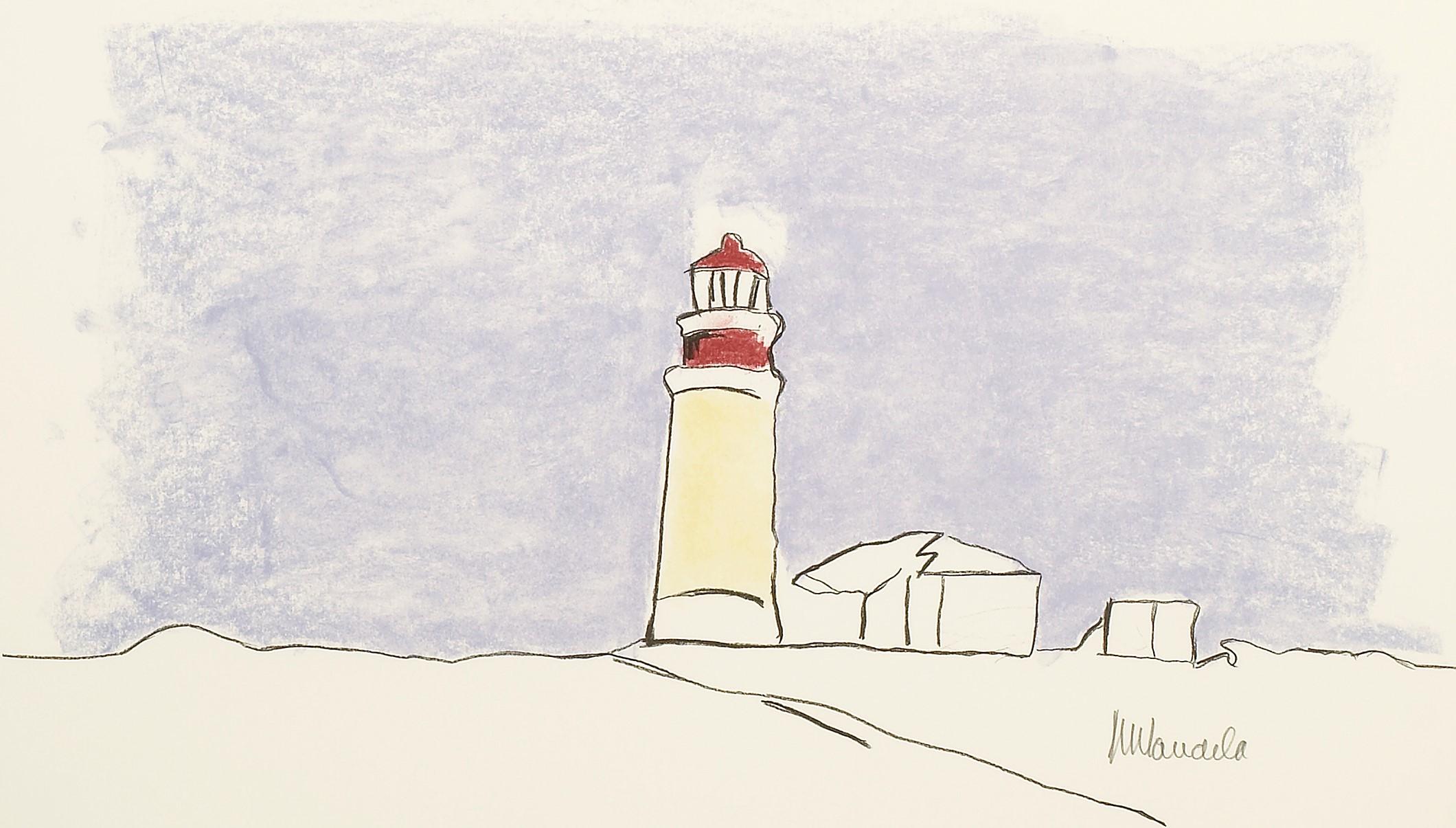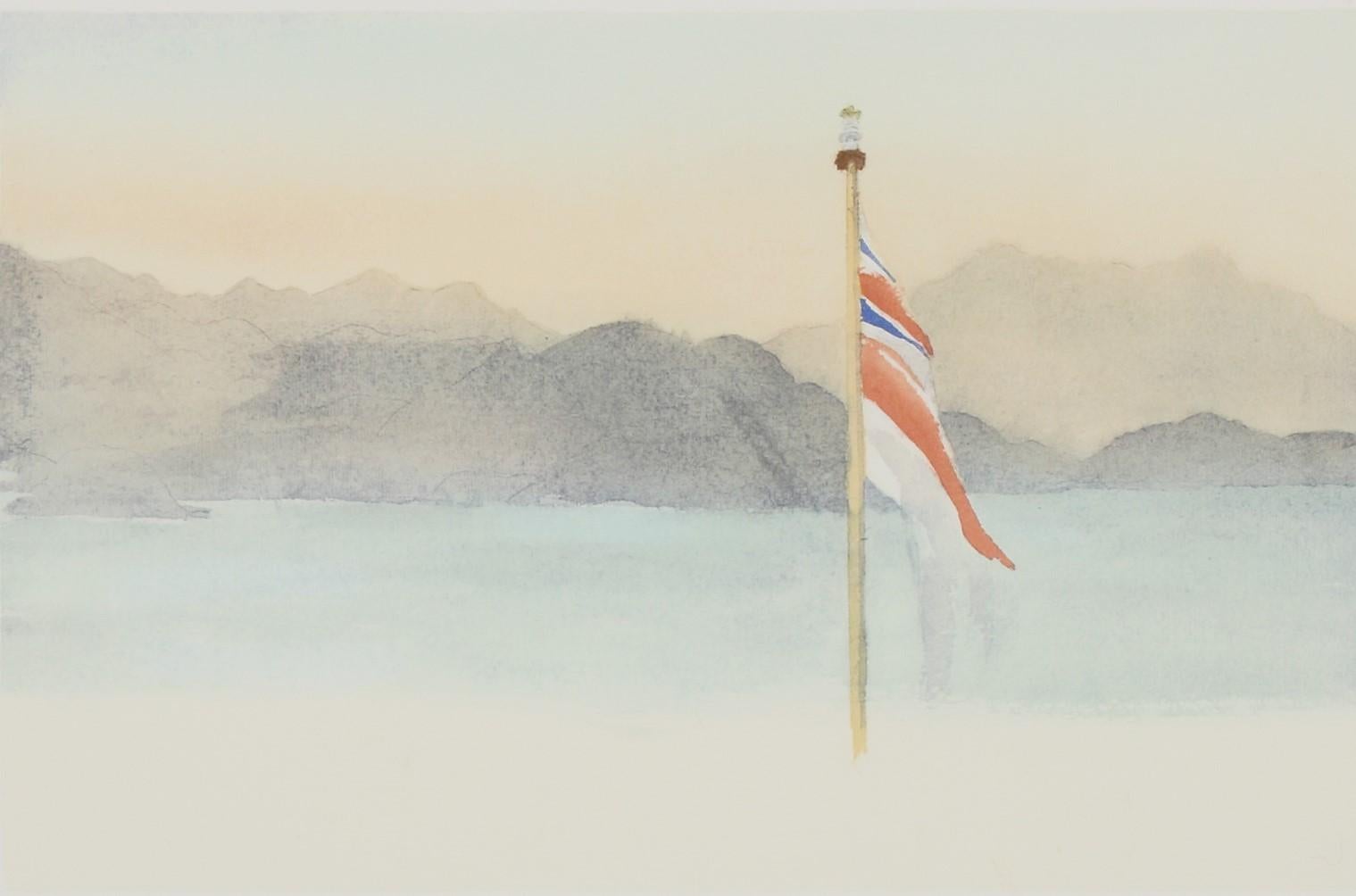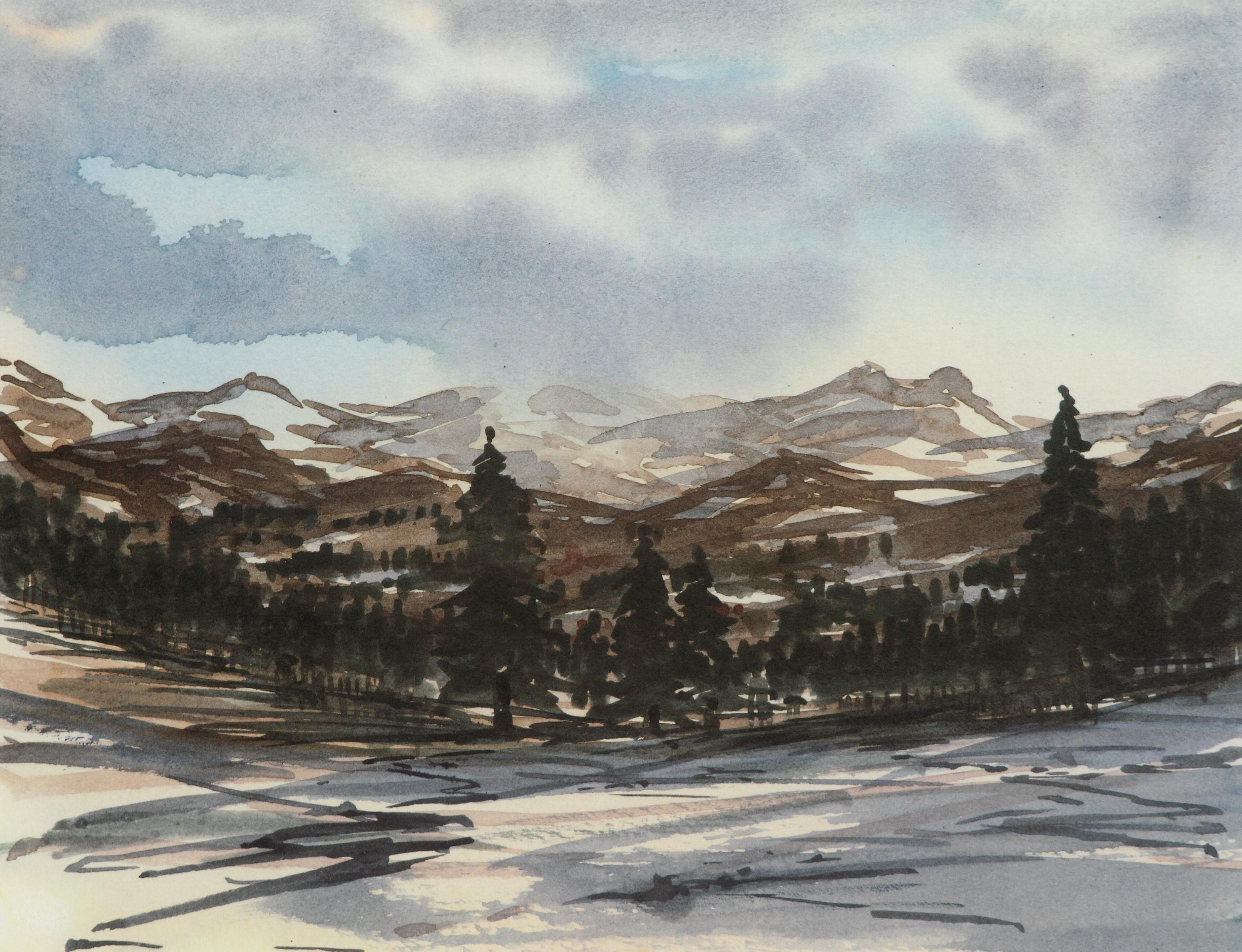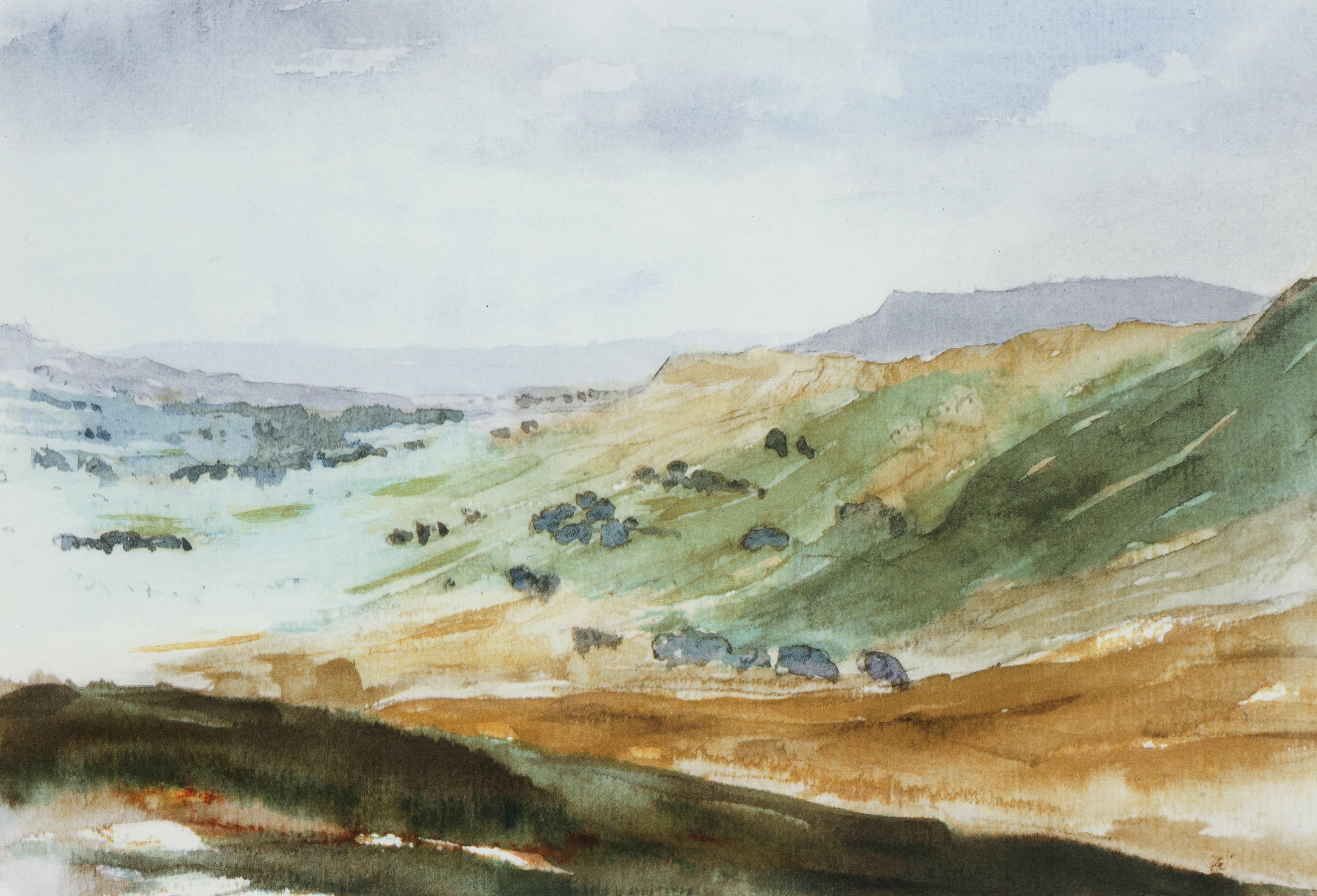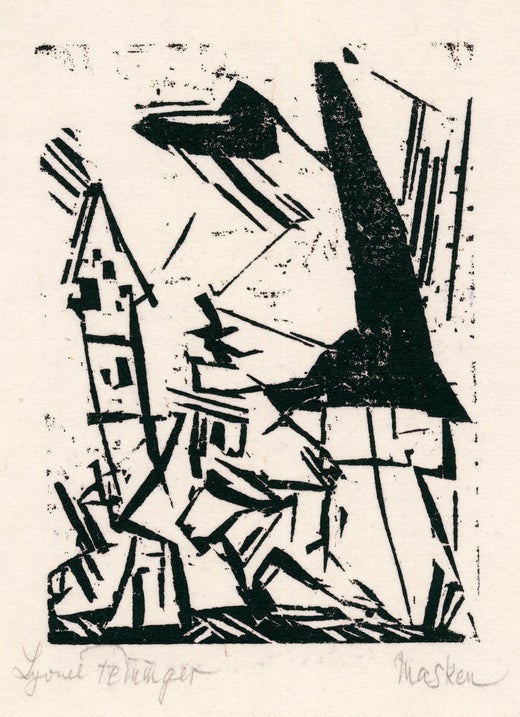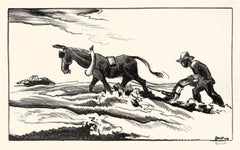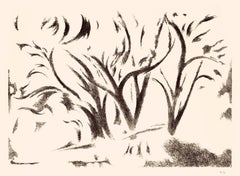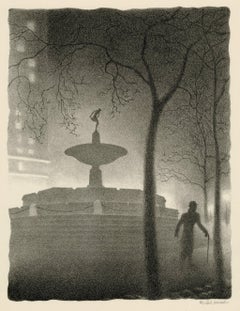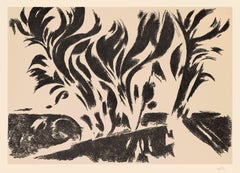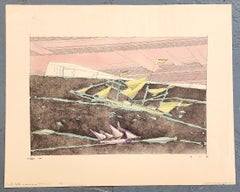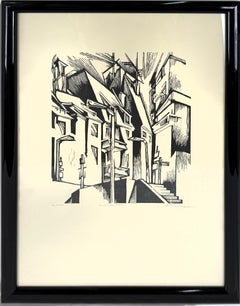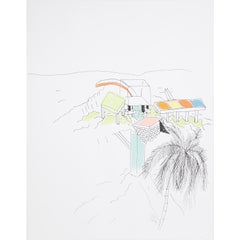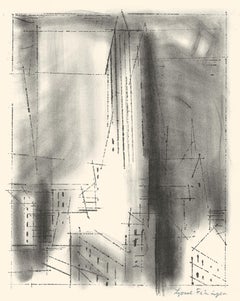
'Manhattan 1, stone 2' — Mid-Century Modernism, New York City
View Similar Items
Want more images or videos?
Request additional images or videos from the seller
1 of 3
Lyonel Feininger'Manhattan 1, stone 2' — Mid-Century Modernism, New York City1951
1951
Price:$5,800
About the Item
- Creator:Lyonel Feininger (1871-1956, American)
- Creation Year:1951
- Dimensions:Height: 11.25 in (28.58 cm)Width: 8.63 in (21.93 cm)
- Medium:
- Movement & Style:
- Period:
- Condition:
- Gallery Location:Myrtle Beach, SC
- Reference Number:Seller: 1039801stDibs: LU532312067312
Lyonel Feininger
Lionel Feininger (1871–1956), a German-American painter, graphic artist, and caricaturist, developed a distinctive style influenced by Cubism and Expressionism. Born in New York City but raised in Germany, Feininger honed his skills at the Hamburg School of Arts and Crafts before studying under renowned artists in Berlin. Initially associated with the avant-garde group "Die Brücke" (The Bridge), Feininger's style evolved over time, gravitating towards Cubism after being inspired by artists like Picasso and Braque. His participation in the "Der Blaue Reiter" (The Blue Rider) exhibition in 1911 further solidified his reputation as an essential figure in the Expressionist movement. Returning to the United States during World War I, Feininger became associated with the American avant-garde, though the Nazis later targeted his works in the "Degenerate Art" exhibition. Feininger experimented with various mediums throughout his career, producing bold and vibrant works depicting urban landscapes and architectural motifs. His legacy as a pioneer of modern art continues to resonate, with his contributions to Cubism, Expressionism, and abstract art celebrated worldwide. Feininger passed away in 1956, leaving behind a rich and influential body of work.
About the Seller
5.0
Recognized Seller
These prestigious sellers are industry leaders and represent the highest echelon for item quality and design.
Platinum Seller
Premium sellers with a 4.7+ rating and 24-hour response times
Established in 1995
1stDibs seller since 2016
315 sales on 1stDibs
Typical response time: 1 hour
Associations
International Fine Print Dealers Association
Authenticity Guarantee
In the unlikely event there’s an issue with an item’s authenticity, contact us within 1 year for a full refund. DetailsMoney-Back Guarantee
If your item is not as described, is damaged in transit, or does not arrive, contact us within 7 days for a full refund. Details24-Hour Cancellation
You have a 24-hour grace period in which to reconsider your purchase, with no questions asked.Vetted Professional Sellers
Our world-class sellers must adhere to strict standards for service and quality, maintaining the integrity of our listings.Price-Match Guarantee
If you find that a seller listed the same item for a lower price elsewhere, we’ll match it.Trusted Global Delivery
Our best-in-class carrier network provides specialized shipping options worldwide, including custom delivery.More From This Seller
View All'Plowing It Under' — WPA Era American Regionalism
By Thomas Hart Benton
Located in Myrtle Beach, SC
Thomas Hart Benton, 'Goin' Home', lithograph, 1937, edition 250, Fath 14. Signed in pencil. Signed in the stone, lower right. A fine, richly-inked impression, on off-white, wove pape...
Category
1930s American Realist Figurative Prints
Materials
Lithograph
Trees in Ranchitos I — Taos Modernism
By Andrew Dasburg
Located in Myrtle Beach, SC
Andrew Dasburg, 'Trees in Ranchitos I', lithograph, 1975, edition 20. Signed 'A. D.' in pencil. Annotated 'Trial Proof' in pencil, verso. A superb impression in warm black ink, on he...
Category
1970s Modern Landscape Prints
Materials
Lithograph
'Pulitzer Fountain, Evening" — 1940s American Modernism, New York City
By Ellison Hoover
Located in Myrtle Beach, SC
Ellison Hoover, 'Pulitzer Fountain, Evening', lithograph, circa 1940, edition c. 40. Signed in pencil. A fine, atmospheric impression, on cream wove paper; the full sheet with margins (1 1/2 to 4 5/16 inches), in excellent condition. Archivally matted to museum standards, unframed.
Image size 12 1/2 x 9 5/8 inches (318 x 244 mm); sheet size 16 1/4 x 12 1/4 inches (413 x 311 mm).
ABOUT THE SUBJECT
The Pulitzer fountain was commissioned as a bequest by Joseph Pulitzer, newspaper publisher and founder of the Columbia School of Journalism. Designed by Austrian sculptor Karl Bitter...
Category
Mid-20th Century American Modern Landscape Prints
Materials
Lithograph
$1,760 Sale Price
20% Off
Trees in Ranchitos III — Taos Modernism
By Andrew Dasburg
Located in Myrtle Beach, SC
Andrew Dasburg, 'Trees in Ranchitos III', two-color lithograph, 1975, edition 20. Signed 'A. D.' in pencil. Annotated 'Trial Proof' in pencil, verso. A superb impression, in grey-bl...
Category
1970s Modern Landscape Prints
Materials
Lithograph
New York Skyline, Sketch
By John Taylor Arms
Located in Myrtle Beach, SC
A fine impression, on cream wove paper, with full margins (5/8 to 1 3/8 inches), in excellent condition. Edition 20. Signed and dated in pencil. Annotated 'Bolton Brown...
Category
1920s American Realist Landscape Prints
Materials
Lithograph
'Navajo Trading Post' — Southwest Regionalism, American Indian
By Ira Moskowitz
Located in Myrtle Beach, SC
Ira Moskowitz, 'Navajo Trading Post', lithograph, 1946, edition 30, Czestochowski 161. Signed and dated in the stone, lower left. A fine, richly-inked impression, on cream wove paper, with full margins (1 1/2 to 3 1/8 inches). Pale mat line, otherwise in excellent condition. Matted to museum standards, unframed.
Image size 11 11/16 x 15 1/2 inches (297 x 395 mm); sheet size 16 5/16 x 191/8 inches (414 x 486 mm).
ABOUT THE ARTIST
Ira Moskowitz was born in Galicia, Poland, in 1912, emigrating with his family to New York in 1927. He enrolled at the Art Student's League and studied there from 1928-31. In 1935, Moskowitz traveled to Paris and then lived until 1937 in what is now Israel. He returned to the United States in 1938 to marry artist Anna Barry in New York. The couple soon visited Taos and Santa Fe in New Mexico, returning for extended periods until 1944, when they moved there permanently, staying until 1949. During this especially productive New Mexico period, Moskowitz received a Guggenheim fellowship. His work was inspired by the New Mexico landscape and the state’s three cultures (American Southwest, Native American, and Mexican). He focused on Pueblo and Navajo life, producing an extensive oeuvre of authentic American Indian imagery. He and Anna also visited and sketched across the border in Old Mexico. While in the Southwest, Moskowitz flourished as a printmaker while continuing to produce oils and watercolors. Over 100 of Moskowitz’s works depicting Native American ceremonies were used to illustrate the book American Indian Ceremonial Dances by John Collier, Crown Publishers, New York, 1972.
After leaving the Southwest, printmaking remained an essential medium for the artist while his focus changed to subject matter celebrating Judaic religious life and customs. These works were well received early on, and Moskowitz was content to stay with them the rest of his life. From 1963 until 1966, Moskowitz lived in Paris, returning to New York City in 1967, where he made his permanent home until he died in 2001.
Shortly before his death, Zaplin-Lampert Gallery of Santa Fe staged an exhibition of the artist's works, December 2000 - January 2001. Other one-person shows included the 8th Street Playhouse, New York, 1934; Houston Museum, 1941; and the San Antonio Museum, 1941. The artist’s work was included in exhibitions at the Art Students League, Art Institute of Chicago, Philadelphia Print Club, College Art Association (promotes excellence in scholarship and teaching), and the International Exhibition of Graphic Arts (shown at MOMA, 1955).
Moskowitz’s lithographs of American Indian...
Category
1940s American Modern Landscape Prints
Materials
Lithograph
You May Also Like
Insel, 1933
By Lyonel Feininger
Located in Kansas City, MO
Lyonel Feininger (after)
Insel, 1933
Collotype, watercolor
Size: 11.5x17in on 17.5x22in
Esther Gentle, Reproduction, 1952
Signed, titled and dated in the stone
Stamped and numbered b...
Category
1930s Bauhaus Prints and Multiples
Materials
Watercolor, Color
$680 Sale Price
38% Off
Kreuzende Segelschiffe 2 (Cruising Sailing Ships 2)
By Lyonel Feininger
Located in New York, NY
Lyonel Feininger, “Kreuzende Segelschiffe 2 (Cruising Sailing Ships 2)”
1919, Woodcut.
Prasse W175. Edition 275 unsigned for portfolio Die tunlte Jahresgabe des Kreises graphischer ...
Category
1910s Bauhaus Landscape Prints
Materials
Woodcut
"Nurnberg" Woodcut Print of the Old City by A. Thomas style of Lyonel Feininger
Located in Soquel, CA
The image shows an abstract, black and white block print in the style of Lyonel Feininger of what appears to be a streetscape in Nuremberg, Germany. The style is reminiscent of early...
Category
1960s Bauhaus Landscape Prints
Materials
Woodcut
Architectural Study
By Ettore Sottsass
Located in Greding, DE
Large format lithograph with architectural study, partly coloured. Signed at lower right. Edition 65/100(?).
Category
Late 20th Century Post-Modern Landscape Prints
Materials
Lithograph
Price Upon Request
Trees and Fields, Print Club of Cleveland
By Peter Takal
Located in Berlin, MD
“Trees and Fields” lithograph commissioned for the Print Club of Cleveland by Peter Takal
Peter Takal’s original lithograph “Trees and Fields” is an accomplished work of art created in 1957. This lithograph bears the stamp “The Print Club of Cleveland” on verso. This impression is signed by Takal in pencil. “Trees and Fields” is a fine example of the art created by the 20th century Romanian / German / American artist, Peter Takal.
Peter Takal: Born in Romania in 1905, Peter Takal spent most of his youth in Berlin and was mainly self-taught. His first one-man exhibition took place in the Gurlitt Gallery, Berlin, in 1932. During the following seven years his art was frequently exhibited at galleries in Berlin, Munich, Paris and as well as Casablanca and Algiers. At the beginning of the Second World War (1939), Peter Takal came to the United States for an exhibition of his art at the Katherine Kuhe Gallery, Chicago. He decided to remain in the United States and became an American citizen in 1944.
Living in New York, Peter Takal quickly established himself as a leading printmaker and a modern master of both lithography and drypoint engraving. One-man exhibitions of his art took place in New York City (1942), Chicago (1939 & 1941), Washington (1959) and Los Angeles (1966). International exhibitions of his art were held at the Galeria de Arte Mexicano, Mexico City (1959), the Palazzo Strozzi, Florence, Italy (1960) and at the Kestner-Museum in Germany (1962). Museums to date that include Peter Takal's original prints in their collections are, the Chicago Art Institute, the Library of Congress, Washington, the Los Angeles County Museum of Art, the United States State Department, UCLA, the Berlin National Museum and the Bibliotheque Nationale, Paris. Over the years, the Museum of Modern Art in New York and the Arkansas Arts Center have acquired a very extensive collection of Peter Takal's lithographs and drypoints. The artist died in 1995.
The Print Club of Cleveland: The Print Club of Cleveland is a non-profit adjunct organization and the country's first museum-affiliated print club devoted to the promotion of art and printmaking as a fine art for printmakers and collectors alike. With its creation in 1919, it has helped to support the growth of the department of prints and drawings at the Cleveland Museum of Fine Arts and has also been a source of great enrichment for collectors of fine prints. During the organizations long history, the club has annually commissioned one original etching engraving, lithograph, woodcut and or other form of original graphic art from such fine American artists as John Taylor Arms, Suzanne Anker, Luigi Lucioni, Will Barnet, Mark Tobey, Lyonel Feininger, Henry George Keller, Louis Lozowick, Karl Schrag, David Jansheski, Deborah Remington, and Peter Takal, as well as from leading international artists such as Henri Matisse, Edmund Blampied, Jean-Emile Laboureur, Salvador Dali, Michael di Cerbo, Phyliss Sloane, Paolo Boni, Juvenal Sanso...
Category
Mid-20th Century Hudson River School Landscape Prints
Materials
Lithograph
Jerusalem Marcel Mouly
By Marcel Mouly
Located in Berlin, MD
Marcel Mouly (French 1918 - 2008) “Jerusalem” lithograph on woven paper with deep saturated colors in excellent condition. Well framed with acr...
Category
Mid-20th Century Abstract Landscape Prints
Materials
Lithograph
Recently Viewed
View AllMore Ways To Browse
Sharon Stone Vintage
Delta Airlines Vintage
Drypoint Etching River
Imaginations And Objects Of The Future Portfolio
James Ulmer
Lassen Print
Magritte Clouds
Peter Max Vase
Six Penny
Thomas Mcknight Signed
1980s Backpacks
Blue Peter Flag
Carlos Almaraz
Courtroom Sketches
Dali French Railway
Martin Lewis Etching
Robert Kipniss Lithograph
Ari Gradus
